- Sorry, this product is unavailable.
-
 The fascinating and true story of a 20th century bush legend. Known only from fleeting glimpses to the people of South Australia's Riverland region who gave him his name, the Possum deliberately turned his back on society to live almost entirely off the land as a recluse on the banks of the Murray River. It took Max Jones, country detective, almost thirty years to solve the mystery behind the man called Possum. From chance encounters, brief meetings and full scale conversations with the man himself - and from the testimony of others - the author pieced together Possum's extraordinary life story. Illustrated with photographs, sketches, newspaper articles and entries from the Possum's own diary.
The fascinating and true story of a 20th century bush legend. Known only from fleeting glimpses to the people of South Australia's Riverland region who gave him his name, the Possum deliberately turned his back on society to live almost entirely off the land as a recluse on the banks of the Murray River. It took Max Jones, country detective, almost thirty years to solve the mystery behind the man called Possum. From chance encounters, brief meetings and full scale conversations with the man himself - and from the testimony of others - the author pieced together Possum's extraordinary life story. Illustrated with photographs, sketches, newspaper articles and entries from the Possum's own diary. -
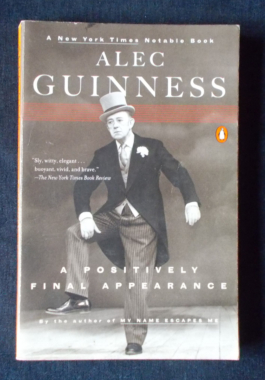 Sir Alec Guinness (1914 - 2000) makes his observations on Britain, taken from his journal at the tumultuous times of Princess Diana's death, the election of Tony Blair and comments on his quintessentially English country life with Mrs Guinness. A follow up to My Name Escapes Me, this volume covers 1996 - 1998. Sir Alec offers frank and surprising reflections on appearing in Star Wars and hilarious reminiscences of Humphrey Bogart and Noel Coward.
Sir Alec Guinness (1914 - 2000) makes his observations on Britain, taken from his journal at the tumultuous times of Princess Diana's death, the election of Tony Blair and comments on his quintessentially English country life with Mrs Guinness. A follow up to My Name Escapes Me, this volume covers 1996 - 1998. Sir Alec offers frank and surprising reflections on appearing in Star Wars and hilarious reminiscences of Humphrey Bogart and Noel Coward. -
 Wells intended this volume to be straightforwardly, almost as a novel is read. It gives, in a most general way, an account of our present knowledge of history, shorn of elaborations and complications. Its special end is to meet the needs of the busy general reader who 'wishes to repair his faded or fragmentary conception of the great adventure of Mankind.' This edition was revised from the 1922 edition and prepared b y Professor G.P. Wells (H.G. Wells' son) and Raymond Postgate. Five new chapters have been added and the original maps are redrawn, with two new maps added. Cover: Detail from Prismes électriques by Sonia Delaunay.
Wells intended this volume to be straightforwardly, almost as a novel is read. It gives, in a most general way, an account of our present knowledge of history, shorn of elaborations and complications. Its special end is to meet the needs of the busy general reader who 'wishes to repair his faded or fragmentary conception of the great adventure of Mankind.' This edition was revised from the 1922 edition and prepared b y Professor G.P. Wells (H.G. Wells' son) and Raymond Postgate. Five new chapters have been added and the original maps are redrawn, with two new maps added. Cover: Detail from Prismes électriques by Sonia Delaunay. -
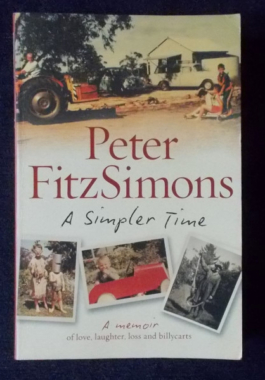
Peter Fitzsimon's account of growing up on the rural outskirts of Sydney in the 1960s is first and foremost a tribute to family. It's also a salute to times and generations past, when praise was understated and love unstinting; work was hard and values were clear; when people stood by each other in adversity. Days were for doing. Here is a childhood full of mischief, camaraderie, eccentric characters, drama, love, loss and billy-carts.
-
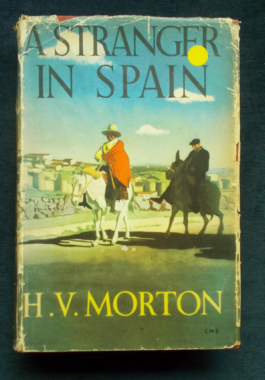 First published in 1954. With his trademark wit and inquisitive eye, H. V. Morton travels through a Spain unspoilt by tourism. Interspersed with episodes from Spain's rich history, this is a journey of discovery that would appeal to those with a sense of adventure and who appreciate a striking introduction to Spanish history and culture. "The stranger who wishes to approach Spain with sympathy and appreciation," H. V. Morton wrote, "must do so through its history." He takes the reader on a leisurely tour through a country where the past is very much alive, revealing a rich tapestry of events related with humor, charm, and sincerity. The Spain of the Christian kings and the caliphs of Córdoba, of Philip II, and the tragic Hapsburgs, the Spain of Columbus, of St Teresa, of Cortés and Pizarro, Velázquez, and Goya, is the thread of Morton's narrative. With colour and black and white illustrations.
First published in 1954. With his trademark wit and inquisitive eye, H. V. Morton travels through a Spain unspoilt by tourism. Interspersed with episodes from Spain's rich history, this is a journey of discovery that would appeal to those with a sense of adventure and who appreciate a striking introduction to Spanish history and culture. "The stranger who wishes to approach Spain with sympathy and appreciation," H. V. Morton wrote, "must do so through its history." He takes the reader on a leisurely tour through a country where the past is very much alive, revealing a rich tapestry of events related with humor, charm, and sincerity. The Spain of the Christian kings and the caliphs of Córdoba, of Philip II, and the tragic Hapsburgs, the Spain of Columbus, of St Teresa, of Cortés and Pizarro, Velázquez, and Goya, is the thread of Morton's narrative. With colour and black and white illustrations. -
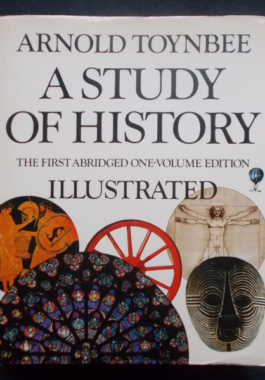 Originally published in twelve volumes, this edition revised by the author and Jane Caplan is the essence of that original work. It is also a redrafted, revised and updated version. Chapters: The Shape Of History; The Geneses Of Civilisations; The Growth Of Civilisations; The Breakdown Of Civilisations; The Disintegrations Of Civilsations; Universal States; Universal Churches; Heroic Ages; Contacts Between Civilisations In Space; Contacts Between Civilisations In Time; Why Study History? With over 500 illustrations.
Originally published in twelve volumes, this edition revised by the author and Jane Caplan is the essence of that original work. It is also a redrafted, revised and updated version. Chapters: The Shape Of History; The Geneses Of Civilisations; The Growth Of Civilisations; The Breakdown Of Civilisations; The Disintegrations Of Civilsations; Universal States; Universal Churches; Heroic Ages; Contacts Between Civilisations In Space; Contacts Between Civilisations In Time; Why Study History? With over 500 illustrations. -
 Dickens' Mr Micawber solved his problems by emigrating to Australia; his example was followed by Dickens' own sons. Alfred arrived in 1865 and younger brother Edward three years later. They both became managers and part-owners of stations in the far west of New South Wales, and stock and station agents. Alfred moved to Victoria and lectured both in Australia and overseas. Edward went to live in Wilcannia which he represented in Parliament. They may not have won fame or fortune, but their story, partly told through family letters, is still absorbing and would be of interest to any fan of Dickens.
Dickens' Mr Micawber solved his problems by emigrating to Australia; his example was followed by Dickens' own sons. Alfred arrived in 1865 and younger brother Edward three years later. They both became managers and part-owners of stations in the far west of New South Wales, and stock and station agents. Alfred moved to Victoria and lectured both in Australia and overseas. Edward went to live in Wilcannia which he represented in Parliament. They may not have won fame or fortune, but their story, partly told through family letters, is still absorbing and would be of interest to any fan of Dickens. -
 Like a tramp, a pilgrim or a wandering scholar, an 18 year-old boy set out one wet December day in 1933 to walk to Constantinople. In that year, when Hitler came to power, adventure beckoned and youth was golden for Patrick Leigh Fermor as he tramped up the Rhine and down the Danube towards the mysterious gateway to the East - sleeping barns, or in fairy tale castles, losing his possessions and being showered with gifts. But there was more to discover than freedom and the camaraderie of the road: the arts, landscapes, religions, languages, histories and above all, the people of a dozen civilisations unfolded before his hungry young mind - sharply outlined before the gathering storm. This volume covers his journey from the Hook of Holland to the Middle Danube.
Like a tramp, a pilgrim or a wandering scholar, an 18 year-old boy set out one wet December day in 1933 to walk to Constantinople. In that year, when Hitler came to power, adventure beckoned and youth was golden for Patrick Leigh Fermor as he tramped up the Rhine and down the Danube towards the mysterious gateway to the East - sleeping barns, or in fairy tale castles, losing his possessions and being showered with gifts. But there was more to discover than freedom and the camaraderie of the road: the arts, landscapes, religions, languages, histories and above all, the people of a dozen civilisations unfolded before his hungry young mind - sharply outlined before the gathering storm. This volume covers his journey from the Hook of Holland to the Middle Danube. -
 Shot down in 1942, young Australian fighter pilot John Williams DFC became a POW in the notorious Stalag Luft III camp in Germany. John had joined the air force shortly before the outbreak of war and, in the larrikin tradition, led his squadron into air combat over the deserts of Libya and Egypt dressed in sandals and shorts. John and his best mate Rusty Kierath were among the 76 POWs who tunnelled their way out of the supposedly escape-proof camp under the noses of their German guards in what later became the Hollywood blockbuster, The Great Escape. Their families never learned what really happened once the pair made it out into the forest. John's niece Louise Williams has pieced together his life, from his upbringing in a tight-knit family hit hard by the Depression, to his exploits in the air, and the many missing details of the tragic escape. It is a powerful and intimate story of one of the most dramatic episodes of World War II. Illustrated with black and white photographs.
Shot down in 1942, young Australian fighter pilot John Williams DFC became a POW in the notorious Stalag Luft III camp in Germany. John had joined the air force shortly before the outbreak of war and, in the larrikin tradition, led his squadron into air combat over the deserts of Libya and Egypt dressed in sandals and shorts. John and his best mate Rusty Kierath were among the 76 POWs who tunnelled their way out of the supposedly escape-proof camp under the noses of their German guards in what later became the Hollywood blockbuster, The Great Escape. Their families never learned what really happened once the pair made it out into the forest. John's niece Louise Williams has pieced together his life, from his upbringing in a tight-knit family hit hard by the Depression, to his exploits in the air, and the many missing details of the tragic escape. It is a powerful and intimate story of one of the most dramatic episodes of World War II. Illustrated with black and white photographs. -
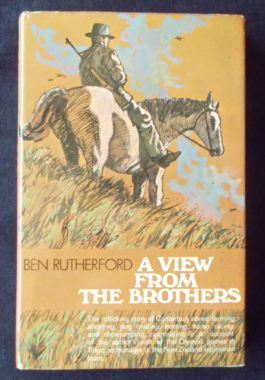 Ben Rutherford was brought up on a high country sheep station in New Zealand, and brought up the old fashioned way. Here he shares his stories of high country farming, swaggers, station cooks and their eccentric temperament, dog trials, horse racing, pig and deer shooting and other rumbustious elements of the New Zealand way of life...a way of life so rumbustious that a farmer member of the Christchurch Club was once heard to exclaim: "It's not the rabbits I'm worrying about, it's the Rutherfords!"
Ben Rutherford was brought up on a high country sheep station in New Zealand, and brought up the old fashioned way. Here he shares his stories of high country farming, swaggers, station cooks and their eccentric temperament, dog trials, horse racing, pig and deer shooting and other rumbustious elements of the New Zealand way of life...a way of life so rumbustious that a farmer member of the Christchurch Club was once heard to exclaim: "It's not the rabbits I'm worrying about, it's the Rutherfords!" -
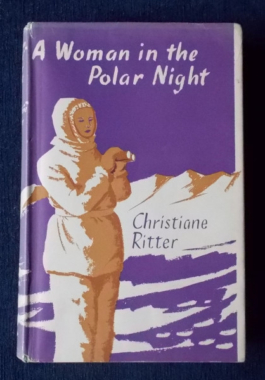
Mrs. Ritter left a very comfortable home to keep house for her husband and a Norwegian trapper in a hut that measured 12ft x 6 ft on Spitzbergebn, some 60 miles from the only neighbour. She was there for a year, often alone for long periods of time while the men were about their affairs - she was alone during her first Arctic blizzard; at other times she went with them on their journeys across snow and ice. Although she came to the experience reluctantly, she fell in love with the lonely island wilderness and all its marvels - from its dark and violent winter to the rose and violet hues of the Arctic summer. Here are stories of bear hunts, blizzards, hazard trekking, making friends with a white polar fox which she named Mikkl as well as the domestic scenes of life within four narrow walls. At this time, the Arctic was regarded as for men only - but Christiane proved this to be all wrong.
-
 On April 6, 1924, eight courageous young Army airmen too off on a 26,000 mile journey into the record books. Three years before Lindbergh flew from New York to Paris, they set out from Seattle in four open-cockpit bi-planes, determined to circle the globe - and they did it. They were battered by blizzards and typhoons, lost in sandstorms and blinding fog and had even given up two of their number for dead. Here is the epic story of the first around-the-world flight.
On April 6, 1924, eight courageous young Army airmen too off on a 26,000 mile journey into the record books. Three years before Lindbergh flew from New York to Paris, they set out from Seattle in four open-cockpit bi-planes, determined to circle the globe - and they did it. They were battered by blizzards and typhoons, lost in sandstorms and blinding fog and had even given up two of their number for dead. Here is the epic story of the first around-the-world flight. -
 Ten noted anthropologists examine the evolution of Aboriginal power from pre-white contact to the 1980s. The first five chapters deal with power relations and ideologies in traditional and tradition-oriented Aboriginal societies and power in relation to myth, land rights, leadership and socialisation. The remaining chapters focus on Aborigines and Torres Strait Islanders are are more integrated into Australian society, mainly urban dwellers; the political middlemen, internal colonialism, the formation of a pan-Aborignal identity and the question of Aboriginal power in an urban setting in general. As a whole, the book offers a wide-ranging examination of the power possessed by Aborigines and how Aborigines perceive power among themselves and in relation to others. The contributors are: Michael. C. Howard; E. Kolig; D.H. Turner; K. Maddock; F.R. Myers; R. Tonkinson; J. Beckett; J.C. Pierson; and D.J. Jones; J. Hill-Burnett.
Ten noted anthropologists examine the evolution of Aboriginal power from pre-white contact to the 1980s. The first five chapters deal with power relations and ideologies in traditional and tradition-oriented Aboriginal societies and power in relation to myth, land rights, leadership and socialisation. The remaining chapters focus on Aborigines and Torres Strait Islanders are are more integrated into Australian society, mainly urban dwellers; the political middlemen, internal colonialism, the formation of a pan-Aborignal identity and the question of Aboriginal power in an urban setting in general. As a whole, the book offers a wide-ranging examination of the power possessed by Aborigines and how Aborigines perceive power among themselves and in relation to others. The contributors are: Michael. C. Howard; E. Kolig; D.H. Turner; K. Maddock; F.R. Myers; R. Tonkinson; J. Beckett; J.C. Pierson; and D.J. Jones; J. Hill-Burnett. -
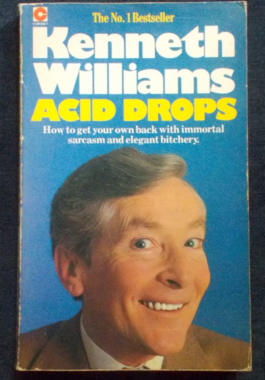 Kenneth Williams, star of stage, radio, screen and Carry On put together a collection of witty, wicked put-downs, retorts, comebacks - and all those great responses we never think of at the time! These have been collected from far and wide across the world of film, literature, politics and celebrity. From Dorothy Parker, observing a notorious society flirt: That woman can speak eighteen languages and can;t say 'No' in any of them. Or Groucho Marx, to a delighted author: From the moment I picked up your book until I put it down, I was convulsed with laughter...some day I intend to read it... After W.C. Fields made his feelings about children widely known, he was asked how he really liked children: His response? "Boiled or fried..." Illustrated by ffolkes.
Kenneth Williams, star of stage, radio, screen and Carry On put together a collection of witty, wicked put-downs, retorts, comebacks - and all those great responses we never think of at the time! These have been collected from far and wide across the world of film, literature, politics and celebrity. From Dorothy Parker, observing a notorious society flirt: That woman can speak eighteen languages and can;t say 'No' in any of them. Or Groucho Marx, to a delighted author: From the moment I picked up your book until I put it down, I was convulsed with laughter...some day I intend to read it... After W.C. Fields made his feelings about children widely known, he was asked how he really liked children: His response? "Boiled or fried..." Illustrated by ffolkes. -

Acting My Life: Ian Holm
$10.00After making a brilliant impact at the RSC in the 1960s, Ian Holm consolidated his reputation with work for Harold Pinter then turned to film, appearing in cult/popular classics such as Alien, Chariots of Fire, The Fifth Element and Lord Of The Rings. His varied career has seen him play an android, Napoleon, King Lear, Hercule Poirot, Lewis Carroll, a hobbit and much more. Large Print edition. -
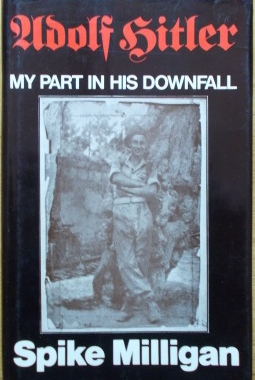 Milligan takes his unwary reader from the outbreak of war in 1939 - 'it must have been something we said' - through his attempts to avoid enlistment - 'time for my appendicitus, I thought' - and his gunner training in Bexhill -'There was one drawback. No ammunition' - to the landing at Algiers in 1943 'I closed my eyes and faced the sun. I fell down a hatchway.' And of course, his mission to cause Hitler's downfall...'At Victoria station the R.T.O. gave me a travel warrant, a white feather and a picture of Hitler marked "This is your enemy". I searched every compartment, but he wasn't on the train...' Loads of bathos, pathos and gales of ribald laughter, this is a barely sane helping of military goonery and superlative Milliganese.
Milligan takes his unwary reader from the outbreak of war in 1939 - 'it must have been something we said' - through his attempts to avoid enlistment - 'time for my appendicitus, I thought' - and his gunner training in Bexhill -'There was one drawback. No ammunition' - to the landing at Algiers in 1943 'I closed my eyes and faced the sun. I fell down a hatchway.' And of course, his mission to cause Hitler's downfall...'At Victoria station the R.T.O. gave me a travel warrant, a white feather and a picture of Hitler marked "This is your enemy". I searched every compartment, but he wasn't on the train...' Loads of bathos, pathos and gales of ribald laughter, this is a barely sane helping of military goonery and superlative Milliganese. -
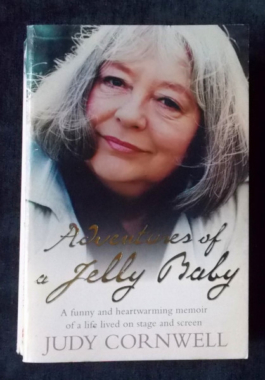 Actress Judy Cornwell has delighted audiences for nearly fifty years and is very well-known for her role as Daisy in Keeping Up Appearances. Her memoir describes her childhood growing up in Britain during the war, and then in Australia where her family emigrated. Retruning to England at the age of 12 she became a professional dancer and comedienne in her teens. Her long and diverse career includes radio roles (The Navy Lark); film roles opposite greats such as Audrey Hepburn, Peter O'Toole and Dudley Moore; a season with the Royal Shakespeare Company and a great many appearances on classic television shows such as Midsomer Murders, Marple, Doctor Who and Eastenders , not to mention her own comedy series Moody and Pegg. Illustrated with black and white photographs.
Actress Judy Cornwell has delighted audiences for nearly fifty years and is very well-known for her role as Daisy in Keeping Up Appearances. Her memoir describes her childhood growing up in Britain during the war, and then in Australia where her family emigrated. Retruning to England at the age of 12 she became a professional dancer and comedienne in her teens. Her long and diverse career includes radio roles (The Navy Lark); film roles opposite greats such as Audrey Hepburn, Peter O'Toole and Dudley Moore; a season with the Royal Shakespeare Company and a great many appearances on classic television shows such as Midsomer Murders, Marple, Doctor Who and Eastenders , not to mention her own comedy series Moody and Pegg. Illustrated with black and white photographs.



